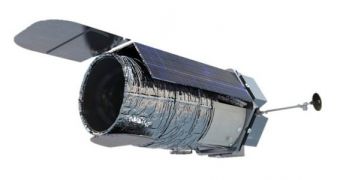According to the conclusions of a new report released by experts with the US National Research Council (NRC) on March 18, NASA can use one or both of the spy telescopes it received from the US National Reconnaissance Office (NRO) back in 2012 for a new high-priority, large-scale space mission.
Barring that, components from the two telescopes could be used to augment the capabilities of other planned missions, though that may come at the cost of a steeper price, the report adds. It then goes on to take a closer look at a proposed redesign of the NASA Wide-Field Infrared Survey Telescope (WFIRST), which the Council identified as a primary science target in its last decadal survey.
Initially, WFIRST was envisioned as a 1.3-meter (4.3-foot) telescope capable of studying exoplanets, black holes and, more importantly, dark energy. This mysterious stuff is believed to make up around 73 percent of the Universe's mass-energy budget. Dark matter accounts for an additional 23 percent, while the other 4 percent is made up of regular matter, of the type that underlies all galaxies and stars.
The issue facing WFIRST design strategies right now is that the two telescopes the NRO gave NASA nearly two years ago are the size of the Hubble Space Telescope, featuring 2.4-meter (7.9-foot) lenses. It stands to reason that using a larger lens, or using two lenses, would increase the scientific returns from this mission, which has been tentatively designated WFIRST/AFTA, Space reports.
“The opportunity to increase the telescope aperture and resolution by employing the 2.4-m AFTA mirror will significantly enhance the scientific power of the mission, primarily for cosmology and general survey science, and will also positively impact the exoplanet microlensing survey,” the document states.
AFTA comes from Astrophysics Focused Telescope Assets, which is the name NASA gave the two observatories it received as present. However, using this design also comes with drawbacks. For instance, total mission costs would jump from $1.8 billion (€1.3 billion) for WFIRST to $2.1 billion (€1.52 billion) for WFIRST/AFTA.
Adding a specialized instrument called a coronagraph on the spacecraft would increase its capabilities even more, by allowing it to block out the light coming from stars that have extrasolar planets in orbit. This would enable WFIRST/AFTA to study these alien worlds in more detail, but the cost overruns are likely to be huge. A feasibility/costs study on this issue is still pending.
“Upon completion of this activity, and a cost and technical evaluation of WFIRST/AFTA with the coronagraph, an independent review focused on the coronagraph should be convened to determine whether the impact on WFIRST and on the NASA astrophysics program is acceptable or if the coronagraph should be removed from the mission,” the document concludes.
The NRC did not provide any type of guideline for NASA in this report. It therefore remains entirely up to the space agency to decide on which design it wants to pursue, provided that sufficient funds are secured.

 14 DAY TRIAL //
14 DAY TRIAL //